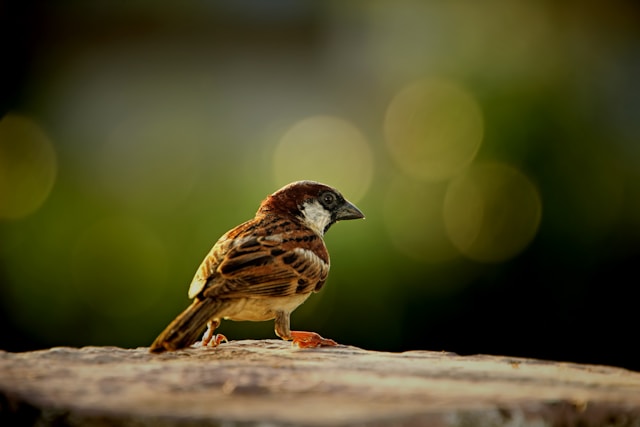New Zealand’s avian world is a treasure trove of unique and captivating behaviors, particularly when it comes to mating rituals. The isolation of this island nation has led to the evolution of extraordinary courtship displays and breeding habits that are unlike anywhere else in the world. From the nocturnal serenades of the kiwi to the elaborate dance routines of the albatross, New Zealand’s birds showcase a fascinating array of mating rituals designed to attract and secure a mate. This article delves into the remarkable courtship behaviors of some of New Zealand’s most iconic bird species, exploring how these rituals play a crucial role in their reproduction and survival.
The Iconic Kiwi: Nocturnal Serenades
The kiwi, New Zealand’s national bird, is famous for its unusual appearance and nocturnal habits. Less well-known, however, are its fascinating mating rituals. Kiwis are monogamous and often form long-term pair bonds. During the breeding season, males and females communicate through a series of calls to establish their territories and attract mates.
The male kiwi’s call is a series of high-pitched whistles, while the female responds with lower, raspier calls. These vocal exchanges can be heard throughout the night as the birds navigate through dense forests. Once a pair bond is established, the male will follow the female closely, and they will engage in mutual preening and nest-building activities. The female kiwi lays one of the largest eggs in proportion to her body size, and both parents take turns incubating it until it hatches.
The Albatross: A Dance of Devotion
Albatrosses, particularly the royal and wandering albatrosses found in New Zealand’s Subantarctic Islands, are known for their elaborate courtship dances. These magnificent seabirds form lifelong bonds, and their mating rituals are a crucial part of the bonding process.
The courtship dance of the albatross is a mesmerizing display of synchronized movements, including bowing, head bobbing, bill clacking, and sky-pointing (raising their bills to the sky). These dances can last for several hours and are accompanied by a range of vocalizations. Through these intricate performances, albatross pairs strengthen their bond and demonstrate their compatibility.
Once a pair is formed, they return to the same nesting site year after year. The female lays a single egg, and both parents share the responsibility of incubating the egg and raising the chick. The dedication of albatross pairs to their mates and offspring is a testament to the strength of their bond.
The Tui: A Songbird’s Symphony
The tui, a native honeyeater, is renowned for its complex and melodious song. Male tuis use their vocal abilities to establish territories and attract females. Their songs are a mix of bell-like notes, clicks, cackles, and whistles, and each male has a unique repertoire.
During the breeding season, male tuis perform their songs from prominent perches, displaying their iridescent plumage and distinctive white throat tufts. The quality and complexity of a male’s song play a significant role in attracting a mate. Females choose their partners based on these vocal displays, which indicate the male’s health and genetic fitness.
Once a pair is formed, the male assists the female in defending their territory and feeding the chicks. The tui’s elaborate song and striking appearance make its mating rituals a captivating spectacle.
The Kakapo: A Lekking Parrot
The kakapo, a critically endangered, nocturnal parrot, has one of the most unusual mating systems of any bird. Kakapos engage in a behavior known as “lekking,” where males gather in specific areas called leks to compete for female attention through vocal displays.
During the breeding season, male kakapos carve out bowl-shaped depressions in the ground and use them as resonating chambers to amplify their booming calls. These calls can carry for several kilometers and serve to attract females to the lek. The males also perform a series of side-to-side swaying movements to further entice females.
Females visit the leks and select mates based on the quality of their calls and displays. After mating, the female kakapo is solely responsible for raising the offspring, with no further involvement from the male.
The Hihi: Flashy Displays and Feeding Gifts
The hihi, or stitchbird, exhibits a fascinating array of courtship behaviors, including colorful displays and feeding rituals. Males display their bright yellow plumage and distinctive white ear tufts to attract females. They perform a series of postures and movements, including wing-flicking and tail-fanning, to showcase their vibrant colors.
In addition to visual displays, male hihis offer food gifts to females as part of their courtship ritual. These feeding gifts, usually consisting of insects or nectar, demonstrate the male’s ability to provide for a potential mate and their future offspring. The combination of visual displays and food offerings plays a crucial role in the female’s choice of mate.
The Fantail: Agile Aerial Displays
Fantails, known for their friendly behavior and distinctive fanned tails, engage in agile aerial displays as part of their courtship. During the breeding season, male fantails perform intricate flight patterns, including loops, spirals, and rapid chases, to attract the attention of females.
These aerial displays not only showcase the male’s agility and stamina but also help to establish and defend territories. Once a pair bond is formed, the male and female work together to build a nest and raise their chicks. The fantail’s dynamic courtship flights and cooperative parenting make them a delight to observe.
Conclusion
The mating rituals of New Zealand’s birds are as diverse and unique as the species themselves. From the nocturnal calls of the kiwi to the synchronized dances of the albatross, these behaviors play a vital role in the survival and reproduction of these remarkable birds. Understanding and appreciating these rituals not only enriches our knowledge of avian biology but also highlights the importance of conserving these species and their habitats. As you explore the natural wonders of New Zealand, take the time to observe and marvel at the intricate and captivating world of bird courtship.
